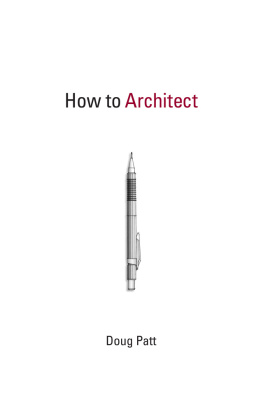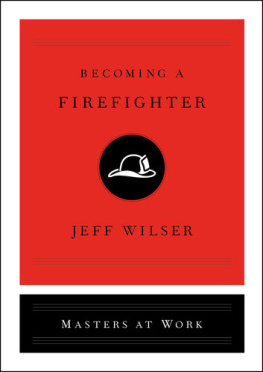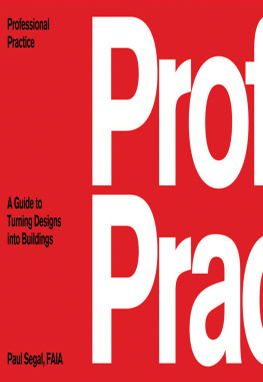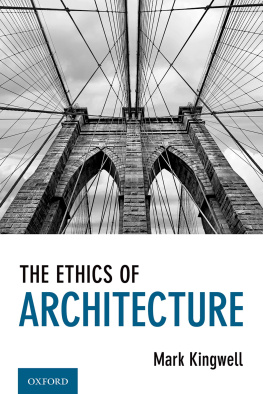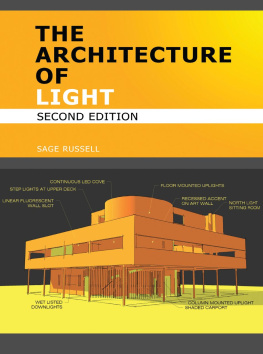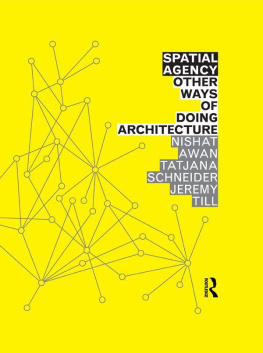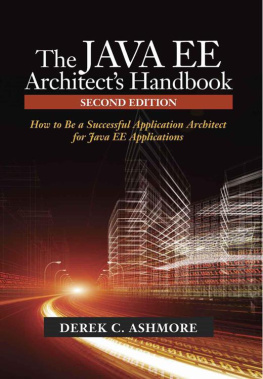Architect?
Architect?
A Candid Guide to the Profession
Third Edition
Roger K. Lewis
The MIT Press
Cambridge, Massachusetts
London, England
2013 Massachusetts Institute of Technology
Originally published in 1985, 1998
All rights reserved. No part of this book may be reproduced in any form by any electronic or mechanical means (including photocopying, recording, or information storage and retrieval) without permission in writing from the publisher.
Library of Congress Cataloging-in-Publication Data
Lewis, Roger K.
Architect? : a candid guide to the profession / Roger K. Lewis. Third Edition.
pages cm
ISBN 978-0-262-51884-0 (pbk. : alk. paper)
1. ArchitectureVocational guidanceUnited States. I. Title.
NA1995.L45 2013
720.2373dc23
2012046588
10 9 8 7 6 5 4 3 2 1
For architecture students, who I hope learned from me and from whom I unquestionably learned much, and for my colleagues, friends, and especially my family
Contents
Creative and Intellectual Fulfillment
Contributing to Culture and Civilization
Love of Drawingwithout a Computer
Service to Others
Teaching
A Great Profession for Polymaths
Money and Lifestyle
Social Status
Fame
Immortality
Fulfilling the Dictates of Personality
Freedom to Do Your Own Thing
Odds of Becoming an Architect
Lack of Work
Competition
Inadequate Compensation
Ego VulnerabilityGetting Lost in the Crowd
The Risks of Envy
Lack of Power and Influence
Anxiety, Disappointment, Depression
Personal Encumbrances
Lack of Aptitude
Lack of Passion and Dedication
Legal and Financial Risks
Disillusionment
Degree Pathways
Curricular Content
Design
History
TechnologyStructures, Materials and Methods of Construction, Environmental and Energy Technologies
Working Digitally
Management
Historic Preservation
Electives
Travel and Study Abroad
The First Year and Workload Shock
New Values, New Language
Competition and Grades
Pencilphobia
The Culture and Community of Architecture School
Being Judgeda Rite of Passage
Other Traditions and Experiences
The ProfessorsScholars and Researchers, Designer-Practitioners, Designer-Theoreticians, Student Advocates, Student Adversaries, Young (or Old) Turks, Good Ol Boys and Girls, Logicians, Techies, Obfuscators, Zealous Leaders, Laid-back Leaders, Separatists, Inscrutables, Venerable Heroes
Some -Isms and -OlogiesFormalism, Functionalism, Historicism,>Technology, Deconstructivism, Symbology, Sociology and Psychology, Methodology, Ecology, Sustainability, Regionalism and Vernacularism, Urbanism
Preparing for Architecture School
Choosing SchoolsLocation, Program Type, Reputation, Resources, Cost, Students, Faculty, Program Ethos
The Admission ProcessThe Portfolio, Interviews, Reference Letters, Grades, Essays, Exams for Admission, Timing, Financial Aid, Admission Odds
Internship
Becoming a Licensed Architect
Continuing Education
Further Studies
Traveling
Teaching
Work in Related Fields
Abandoning Architecture
How Projects Get BuiltNeed, Site, Development Costs and Financing,Design and Design Approvals, Engineers and Other Design Consultants, Brokers, Attorneys, Construction Contractors and Managers
Role-Playing
Users and the Community
Manual and Digital Drawing
Physical Models Built Manually or Digitally
Writing
Reading and Researching
Meeting and Talking
Calculating
Client Contact
Government Reviews and Approvals
Consultants and Coordination
Working Digitally
Construction Phase Services
Organization within Architectural Firms
Diversified Services
The Goals of Architectural Firms
Getting the First Job
Economic Conditions
Territory
Types of Markets and Clients
Selecting Architects for Projects
The Direct Approach
The Indirect Approach
The Interview
Joint Ventures
Architects as Contractors, Construction Managers, and Developers
Design Competitions
Free Services
Household Clients
Real Estate Developers
Corporate Clients
Entrepreneurs
Institutional Clients
Government Clients
Citizens and the Community as Clients
Architects as Types
Idols and Adulation
The Faces of an Evolving Profession
On Becoming an Architect
On Being an Architect
Preface
When I wrote the first edition of this book about the profession of architecture, my goal was to explain the true nature of architectural education and practice. I wanted to tell beginning architecture students and prospective architects, lucidly and honestly, what to expect. At the time, such a book seemed to be missing in the literature about architecture.
In 1998, when the second edition was published, my goals for the book had not changed but the culture and practice of architecture had. The profession, as well as architecture schools and degree programs, had become more diverse. The use of computers had increased exponentially. New architectural philosophies, theories, and fields of exploration had appeared. And my own perceptions, interpretations, and judgments of architecture had evolved, along with my writing style. Consequently, in addition to updating and enhancing the text, I added more illustrations to augment the books visually storytelling effectiveness. Once again, for the same reasons, another update is needed. Thus, similar to the previous edition, this new edition discusses changes affecting, and affected by, the profession since 1998.
Yet despite the latest revisions, Architect? remains faithful to its original intent: to offer a candid account of the realities of becoming and being an architect. A subjective work substantially based on my own experiences, observations, and analysis, it discloses the texture and complexity, the agonies and ecstasies, of being an architecture student and then a practicing architect. The book purposefully focuses on architectural practice, for which most architects are educated and what most prospective architects expect to do. Nevertheless, it also discusses other, related career options that graduate architects pursue rather than practice.
Since finishing architecture school in 1967, I have taught, practiced, and written extensively about architecture. I have advised, instructed, or employed hundreds of neophyte architects. But few would-be architects understood what they were getting into, either prior to embarking on an architectural career or, in many cases, after embarkation. Years of answering the question, What is it really like to be an architect? so often posed by students, clients, and others have motivated me to tell and retell the story.
This book is aimed at anyone seriously contemplating becoming an architect: students in high school and college, those out of school thinking about reentering, beginning architecture students, and young architects just finishing school. Career guidance counselors and academic advisers should read or refer to this book before offering suggestions to their questing advisees. Architects clients or potential clients should read it to learn the facts of life about the architects they hire, admire, or abuse. Finally, architects should read this book to see the extent to which it affirms or contradicts their own view of themselves and their personal experiences.
Some readers seek basic information and others look for basics plus elaboration and commentary. I have tried to respond to both levels of interest, although readers may discover additional levels of intent and interpretation beyond these two. I hope especially that the illustrations complementing the text help illuminate and validate the books many contentions, which nevertheless represent solely my point of view.


